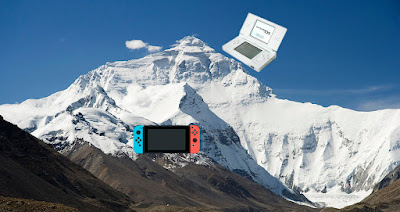What's an Industry Bubble?
With the creation of many industries, there have been times of boom and bust. For many industries, a cyclical occurrence is determined by the needs and wants of consumers. When an industry crashes heavily from record highs to lead to a sustained long period of depressed earnings, it is an industry bubble. There are many examples of it occurring in the last 30 years, with the gaming crash of 1983, the internet bubble that collapsed in 2001, and the housing bubble in 2008 that led to the greatest economic recession in the past hundred years. There are many examples of bubbles that we can see, what leads to an industry bubble and how does it affect industry?
For most gaming fans, one of the most relevant industry bubbles was the events that led to the gaming crash of 1983. Revenues of the video game industry went from $3.2 billion dollars in 1983 to $100 million in 1985. The reasons for the videogame crash in North America are numerous. There was too much competition in the market, with a variety of consoles to choose from and many high-profile failures. Central to the video game crash was a glut of low-quality games that completely eroded consumer confidence. With all the low quality games, people stopped buying them since they did not believe that the games were worth the cartridges they were released on. The crash of 1983 led to a diaspora of North American gaming companies that would leave the gaming market. It led to the growth of Japanese companies such as Nintendo that would shape the industry in a decidedly Japanese fashion. This Japanese dominance would go on unchallenged until Microsoft’s first foray into the console gaming world with the XBOX brand.
A modern industry bubble has many parallels with a historical gold rush. When a company ventures into a new industry, the first companies there are uncertain about future success. Once success is found, there is a wave of excitement that leads companies to invest into this new and exciting industry. If there is a large enough market, many companies will see success, and those companies will be all over the press. Then competition starts increasing and it starts driving down the revenues that these companies make. Once it hits critical mass, the bubble pops and the rush is over. Many companies leave with this industry shakeup, and companies still there have to find new and inventive ways to stay relevant.
Industry bubbles are created when there is a glut of product that drives down the value, making it impossible to sell for a profit and this glut makes it hard for consumers to discern quality from something poorly made. These bubbles explode when the consumers leave the market in droves, making an industry unsustainable. One of the problems is that it is hard to measure customer satisfaction, thus making it impossible to gauge when the next big industry bubble will explode. Until it actually explodes, the people who talk about the industry collapse are typically relegated as outliers since there are interested parties who want industry success sustained for long periods.
Bubbles come and go, the difficulty is being the person who sounds the alarm since they are the ones who are ostracized and called out. The lack of information that the public has makes it impossible to determine what is a bubble and what isn’t. A modern example is the collapse of the comic book market that was sustained by a speculative bubble. People thought that comics would continue increasing in value like the rare 1940’s comic books, only to find out that the huge print run comics were not a good investment, leading to an industry collapse. Bubbles typically affect niche markets, with the housing bubble and the college bubble being a rare exception that cuts across a wide swath of the population. There are long-term ramifications for bubbles and how they affect their industries, it is just a matter of not being invested in this industry when the bubble explodes.
Kris Zoleta started working in Anime Expo as a staffer in Manga Library. He worked in Staff Service in Anime Expo 2006 and became the manager of Manga Lounge from Anime Expo 2007-2010. He is currently serving on the Board of Directors for the Society for the Promotion of Japanese Animation, the 501(c)(6) non-profit behind Anime Expo and is one of the most recognized cosplay photographers in the West Coast.






Comments